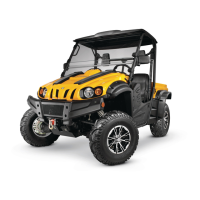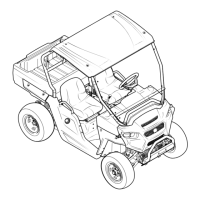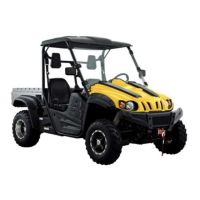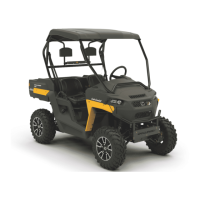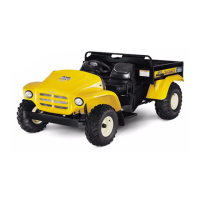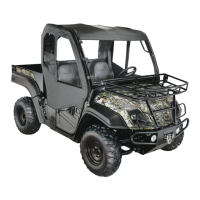Troubleshooting
•
Make sure all terminals within the connector are clean and free of corrosion.
Clean them. If necessary. And pack the connectors with dielectric grease
•
Push the connectors with dielectric grease together so that they are fully
engaged and locked together. Too much dielectric grease can create a
hydro-lock and make it difficult to assemble the connectors.
•
Never pull the electrical wires when disconnecting an electrical connector-pull
only on the connector.
Intermittent Problems
Intermittent problems are problems that do not occur all the time and can be difficult to
locate. For example. When a problem only occurs when the UV is ridden over rough
roads (vibration) or in wet conditions (water penetration), it is intermittent. To locate and
repair intermittent problems, simulate the condition when testing the components. Note
the following:
•
Vibration---This is a common problem with loose or damaged electrical
connectors.
1)
Perform a continuity test as described in the appropriate service
procedure.
2)
Perform a wiggle test on the connectors while repeating the test. Do the
same when checking the wiring harness and individual components.
especially where the wires enter a housing or connector
3)
A change in meter readings indicates a poor connection. Find and repair
the problem or replace the part. Check for wires with cracked or broken
insulation.
•
Heat--- This is another common problem with connectors or plugs that have
loose or poor connections. As these connections heat up, the connection or joint
expands and separates, causing an open circuit. Other heat related problems
occur when a component creates its own heat as it starts to fail or go bad
1)
Troubleshoot the problem to help isolate the problem or area.
2)
To check a connector. Perform a continuity test as described in the
appropriate service procedure. Then repeat the test while heating the
connector with a heat gun or hair dryer. If the meter reading was normal
(continuity) when the connector was cold, then fluctuated or read infinity
when heat was applied, the connection is bad.
3)
To check a component, wait until the engine is cold, then start and run the
engine. Note operational differences when the engine is cold and hot.
4)
If the engine does not start, isolate and remove the component. First test
it at room temperature, and then after heating it with a hair dryer. A
change in meter readings indicates a temperature problem.
Caution:
A heat gun or hair dryer will quickly raise the heat of the component being tested.
Do not apply heat directly to the ICM or use heat in excess of 60
℃
(140
℉
) on any
electrical component. If available, monitor heat with an infrared thermometer.
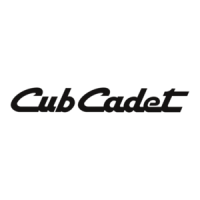
